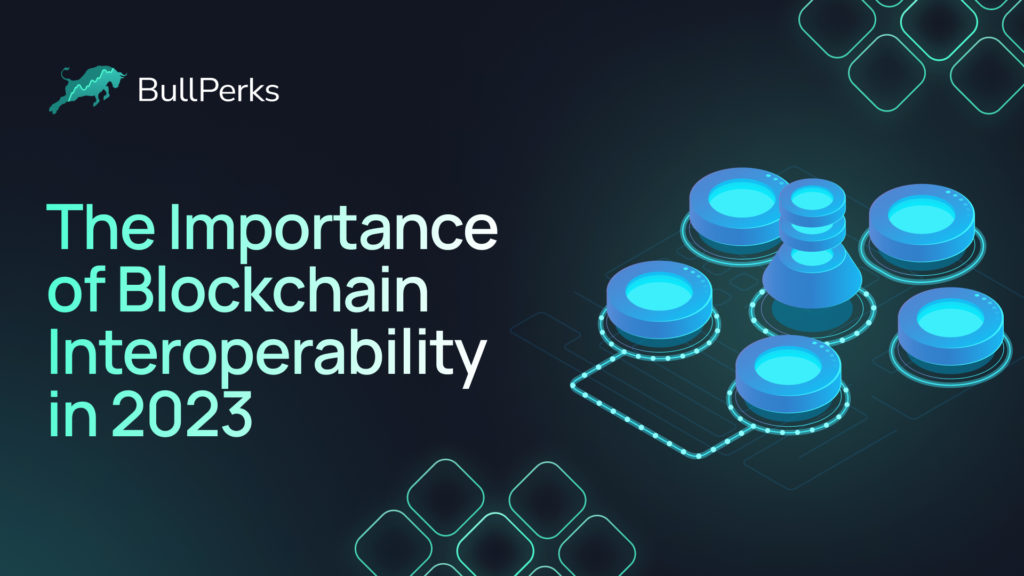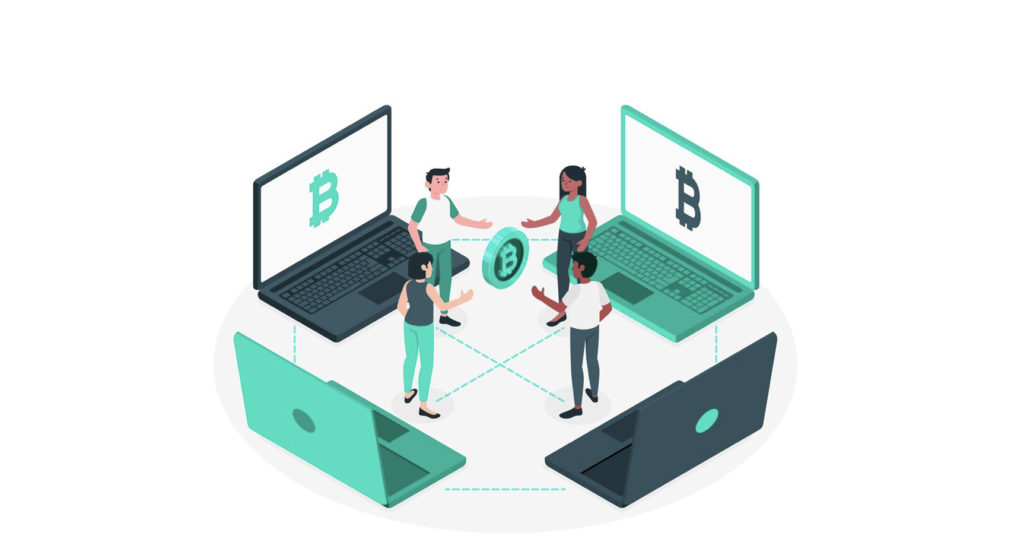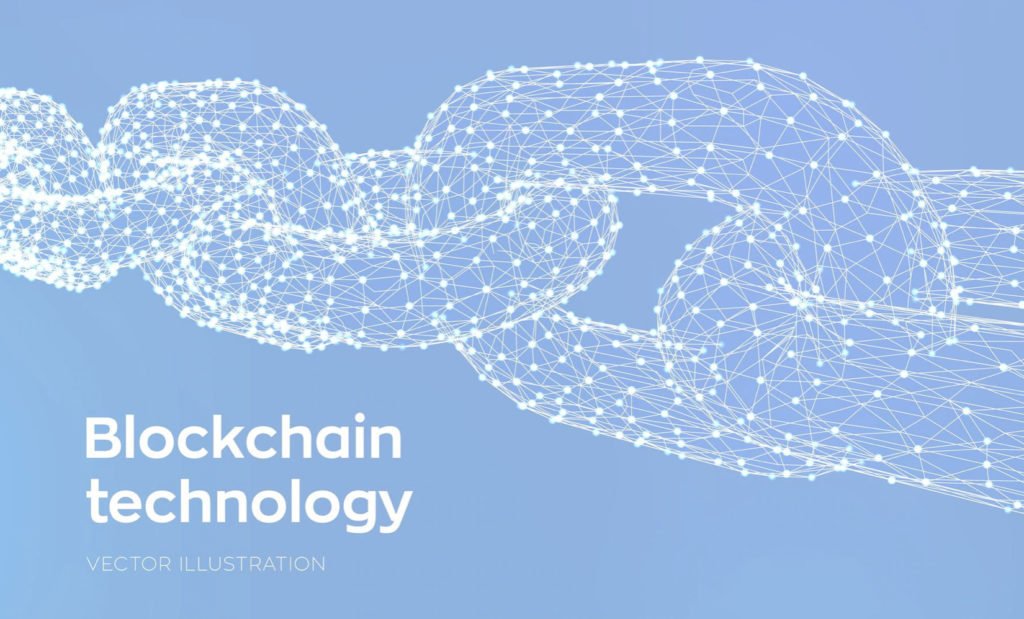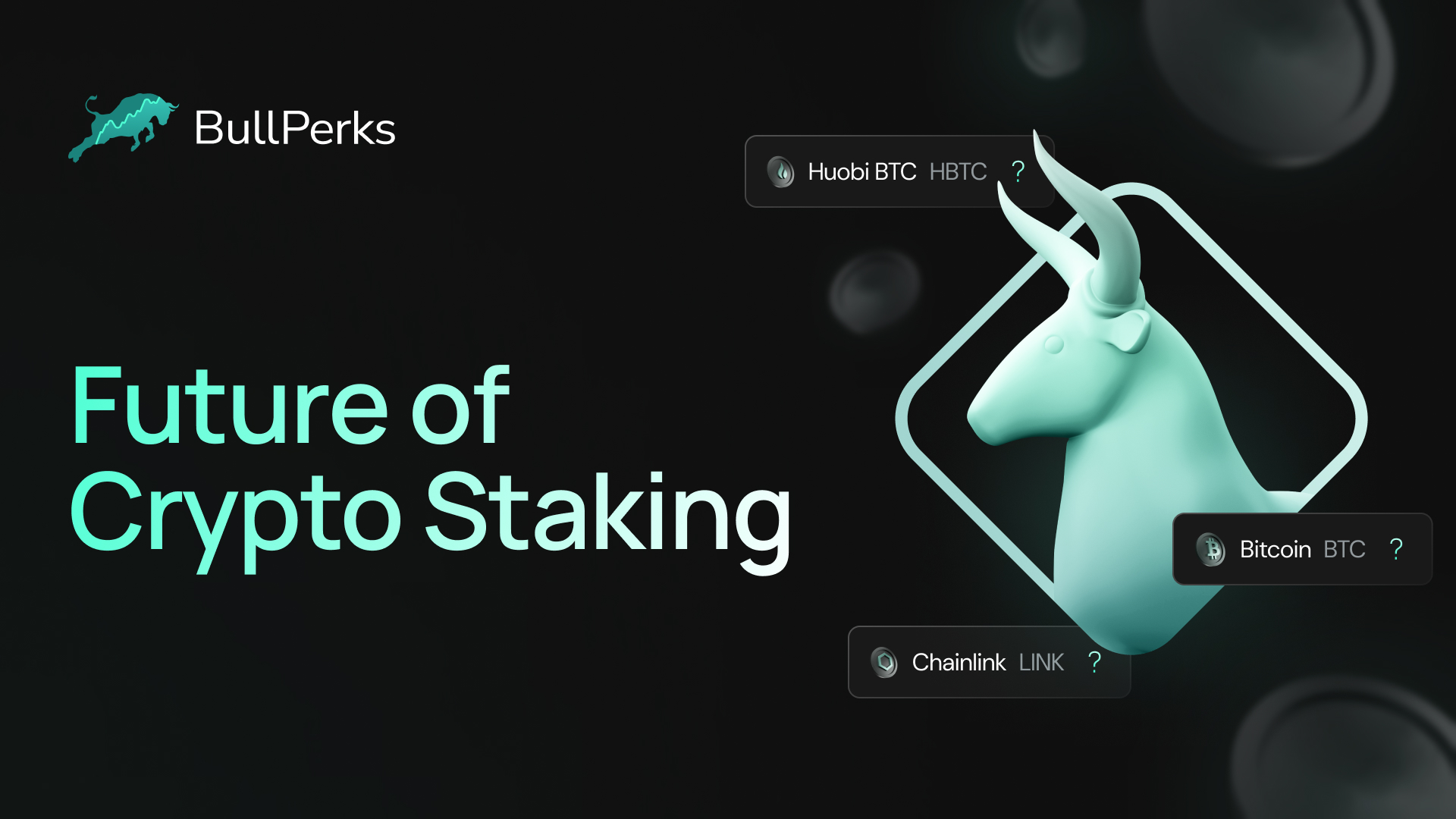
Blockchain interoperability is an important milestone in the blockchain development. It is expected to move the industry to a qualitatively different level and contribute greatly to blockchain development and, eventually, to its mass adoption.
Constantin Kogan, BullPerks co-founder, and Temujin Louie, Vice President in Marking and Growth at Wanchain, are discussing the possible developments in blockchain interoperability and the challenges that developers are facing in the BullPerks episode. Let's explore this matter with them.

Importance of Blockchain Networks Interoperability
Blockchain interoperability refers to the ability of the infrastructure to transfer data and assets across different blockchains, including private and public blockchains, seamlessly and safely.
The resolution of the blockchain interoperability problem is going to enable the market to grow and scale globally.
But what exactly role does blockchain interoperability play in the development of blockchain networks?
Temujin, who has been active in the blockchain sector since the early stages of industry development, emphasizes the critical role of interoperability in the development of blockchain solutions.
He believes that the interoperability of multiple blockchain networks is one of the most important milestones in the development of blockchain technology.
He connects the current state of blockchain networks with the local area networks before the advent of the internet when these networks couldn't communicate, and exchanging data among them was either very complicated or impossible.
Interoperability for further blockchain development
Thus, Temujin highlights that blockchain interoperability that would allow cross-chain communication is not only a crucial development but it is inevitable for the widespread adoption of blockchain.
First, developers shall find a way to enable cross-chain communication, and then, they will work on making the communication channels safe.
Technical Challenges on the Way to Enabling Cross-Chain Interoperability
It is impossible to say that there are no solutions at all that enable cross-chain interoperability, but for now, they all don't comply with safety and efficiency requirements.
Bridges have been among the most popular blockchain interoperability solutions, but after the recent hacks in which billions of dollars were stolen, users started questioning the security of these interoperability methods.
Temujin believes that bridges are valid blockchain interoperability solutions, but one shall choose a properly developed bridge.
He also emphasizes that among many inter-blockchain communication ways, one shall choose high-quality products as we do in any other case.
Some chains, such as Polka Dot and Cosmos, have made a lot to facilitate cross-chain interoperability. However, they made it within their blockchain platforms.
So, we are still far from enabling real blockchain interoperability.
The main challenges for developing a 100% operational cross-chain communication protocol that would connect different blockchain networks are:
- The lack of a common language across different blockchain networks. There is no common standard to make different blockchain networks communicate with one another seamlessly. Different blockchain platforms use different blockchain protocols, consensus mechanisms, standards, etc.
- Reliance on Web2 in many matters, and Web2 is often centralized and, thus, not compatible with the decentralized nature of blockchain to the extent as it is required. Once this reliance is eliminated or at least reduced, a new interoperability model may be developed.

Interoperability of Multiple Blockchain Networks: Use Cases
Blockchain interoperability doesn't mean that each blockchain participant will be able to see all the data of other participants and chains. Right now, we have examples of private blockchains that exist independently from other blockchain platforms. in the case of such networks, a selective interoperability model enabled by smart contracts will be applied.
Selective blockchain interoperability model enabled by smart contracts
Selective transparency will be introduced by blockchain-enabled smart contracts. It means that accesses to specific data and assets will be layered and provided depending on the user's eligibility to access selected information.
Interoperability in DeFi
DeFi is one of the sectors that can benefit from a safe interoperable blockchain infrastructure greatly.
Moving assets from one blockchain to another, leaving collateral on one chain and borrowing from the other chain without a need to exchange tokens, performing multi-token transactions, and wasting time - in this regard, users would appreciate real blockchain interoperability.
DeFi is not interoperable yet
Temujin explains that we shall clearly understand the difference between a DeFi platform or a DEX operating on multiple blockchains and real interoperability that enables communication between different blockchain ecosystems.
For now, we deal with the first phenomenon, while to handle the latter one, we need more developed technology stacks.
With time, smart contracts will enable true interoperability in DeFi when users will be able to perform transactions not only on the main chain but across other chains without compromising security. Ecosystems will be able to use on-chain and off-chain data to perform efficient lending procedures.
GameFi and interoperability
Now, we can observe a new trend - the development of games that run on different blockchains.
Temujin explains that traditionally, games have been trying to be isolated from each other. A specific game that runs on a specific device, and users can share data only within the game - this approach has been characteristic of game developers for ages.
While there is no problem with performing transactions in different ecosystems or moving assets from, for example, the Ethereum network across many projects running on various blockchains, blockchain game developers preserve the tradition: they prefer to limit users to the same application.
NFT technology may change the tradition
With the further development of NFT technology, it may change.
So, once avatars stop being just a creation of a specific network but evolve to represent the digital identity of a user, no blockchain platform will be able to limit a user to using that specific blockchain game only.
Instead, a real need for cross-chain technology will arise that would enable not only to send data from a source blockchain to a destination chain but also to exchange data across other blockchains by applying a standard decentralized consensus mechanism.
Or even more than that, technology will be developed that will enable the use of off-chain data and its transfer from one chain to another.

Economic Incentives for Mass Adoption of Blockchain Technology
For blockchain interoperability achieved, people shall use blockchain platforms massively. Indeed, with the current adoption of blockchain ledgers, no real interoperability is needed.
While economic incentives can be introduced to motivate people to exchange data and digital assets across blockchains, Temujin has mixed feelings regarding this solution.
He insists that even though incentivizing the public economically may be efficient, it has many challenges.
First of all, such solutions may attract regulatory scrutiny. They also can be short-sighted.
However, Temujin remains optimistic regarding cross-chain technology.
He insists that we are already there, blockchain is there, its popularity is growing, and thus, sooner or later, we will come to the blockchain mass adoption. And thus, technology that would connect all existing systems will eventually be developed.
Future Outlook
For the further development of blockchain protocols that enable cross-chain interoperability, there is no need to create a single blockchain. Interoperability means that multiple blockchains will exist, and people will be able to use all of them with reliable mechanisms that enable cross-chain collaboration.
Cross-chain interoperability: decentralized and centralized components
It will involve the ability to exchange data and perform transactions by combining different functionalities that would go beyond atomic swaps. Smart contract technology will most likely play a crucial role in the development of this new functionality set
This new ecosystem doesn't have to be 100% decentralized and open to all the network participants.
So, application-specific blockchains with their network-specific security levels will and shall stay centralized and controlled. And indeed, there is no company that would notify the world about their financial decisions or strategic moves. However, such blockchains also will be included in the ecosystem.
We Are Still Far From the Destination
Temujin mentions that true blockchain interoperability is still a work in progress and that the industry is earlier in its development than most people realize.
At the moment, technology is still too young to solve the issue. But over time, efficient solutions will be developed that will enable one blockchain platform to interact with other blockchains efficiently and safely.
Conclusion
While true interoperability is still not implemented, and we are still far from it, we can already see that without it, blockchain technology won't reach its full potential. Now, many projects are already working in an effort to handle this challenge, but for now, we are still far from the true network interoperability.
Would you like to start investing in the most promising crypto projects? Learn how to invest with BullPerks, the fairest and most community-oriented decentralized VC and multichain launchpad!
Disclaimer. This material should not be construed as a basis for making investment decisions or as a recommendation to participate in investment transactions. Trading digital assets may involve significant risks and can result in the loss of invested capital. Therefore, you must ensure that you fully understand the risk involved, consider your level of experience, investment objectives, and seek independent financial advice if necessary.












